Solar technology is now more popular across the globe. And several innovations are popping up, making these panels more useful for everyday activities.
Incredibly, you can find solar cells on various buildings in residential areas.
However, not all roofs are compatible with PV systems. In truth, some roofing materials are more effective at accommodating solar panels.
Read on to find out the best roof for solar panels and what to consider during installation.
Best Roofing Material Options for Solar Panels
Not all roofing materials have the same structural integrity to handle the weight of solar panels. However, here are some roofing materials that are effective with these panels.
Tiles
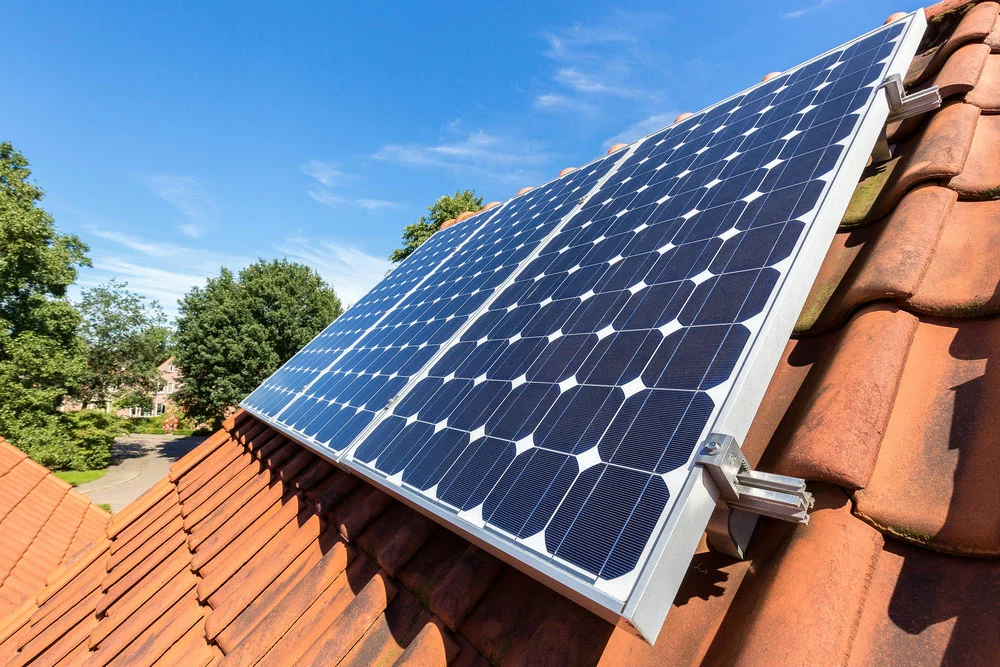
Solar panels on tile roof
Different tile materials, like clay, concrete, or slate, can handle solar panel installation. However, removing tiles from areas accommodating the solar panels’ feet is necessary. Thankfully, it’s easy to do and won’t obstruct the solar panel installation process.
Moreover, installing solar cells on these roof types can be expensive. And it may need more labor than usual. But you’ll have a sturdy and durable solar panel system after completing the installation.
Further, getting the right installer for this roof type is crucial because not all professionals can handle this task.
Asphalt
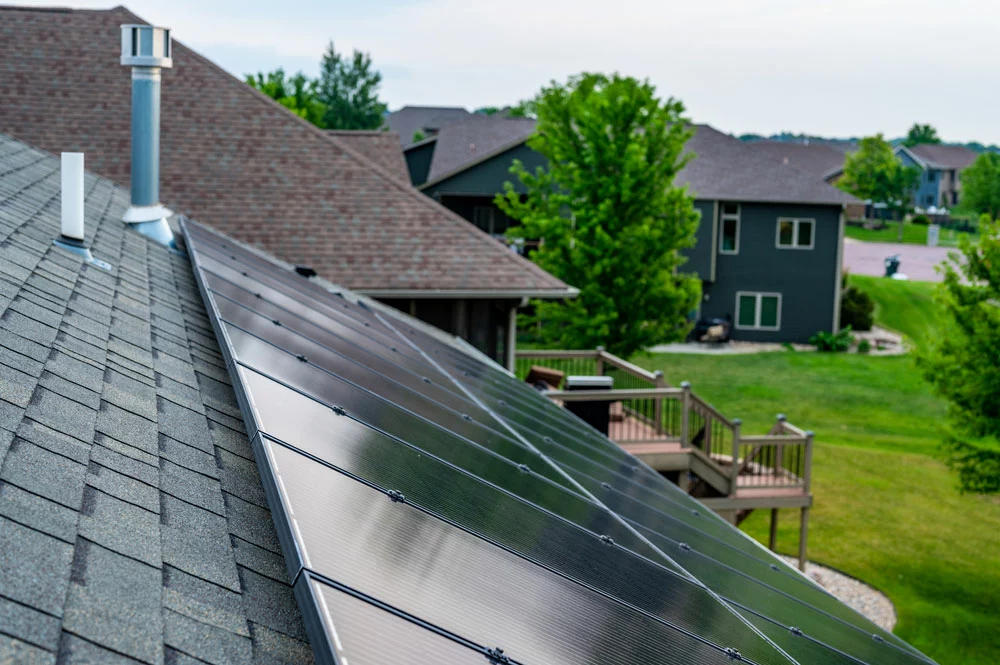
Solar panels installed on asphalt roof
Asphalt is the most common type of roofing material in residential areas that support solar panels.
Asphalt roofs are flexible and durable enough to handle the solar cell’s weight without damage. Additionally, installing solar panels on these roofs is straightforward.
Installers start the process by drilling studs on your roof’s surface. Then, they mount the solar panels on the aluminum rail. While at it, your installer should cover the space between your roof and studs with flashing to prevent water leakages.
In addition, the installation process is cost-effective because it’s easy to complete.
Tar and Gravel

Solar panels on a tar roof
There’s a minute difference between asphalt and tar & gravel roofs. And the difference is that tar & gravel roofs offer steeper angles. Hence, you’ll need additional hardware to install the panels correctly.
Luckily, this extra process may not increase the installation costs. In addition, these roofing types feature multiple asphalt layers, which gives them enough sturdiness to support solar panels. Also, this feature prevents cracks and leaks on your roof after installation.
Metal
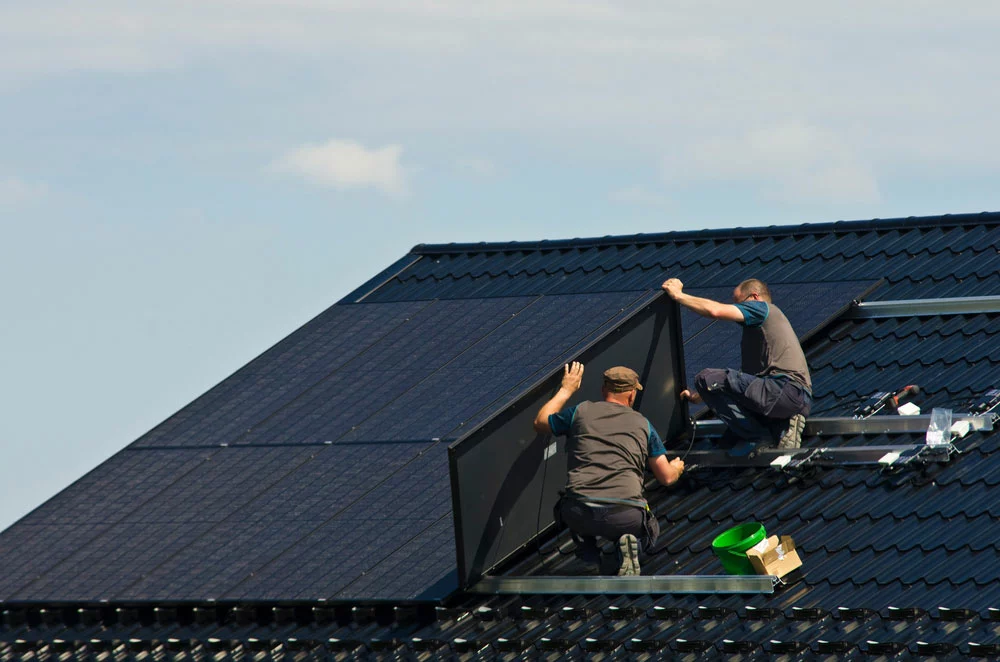
Men installing solar panels on metal roof
Metal is excellent with solar arrays. Also, you’ll enjoy a smooth and easy installation process if your metal roof has standing seams for attaching the solar panels.
With this, the installation process won’t require drilling. And it reduces the need for extra labor.
Typically, solar panel installations on metal roofs have lower overall costs. Also, these roofing materials won’t combust since they are highly resistant to flames. Hence, they’re perfect for uncontrollable situations where your panels may catch fire.
Other Considerations when Installing Solar Panels
Don’t just install solar panels on your roof. Whether you’re re-roofing or using your current roof, it’s best to consider certain factors to avoid compatible issues and optimize your tops for solar installation.
Examine Your Roofing Material
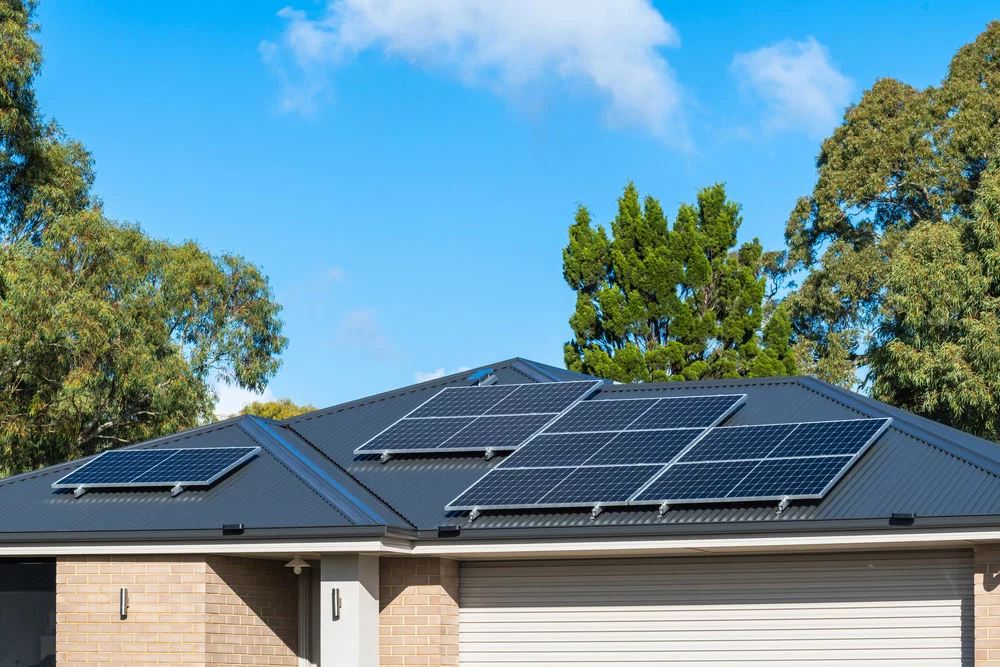
Multiple solar panels on a roof
Don’t worry about solar panels hurting your roof. Most roofing materials can support solar installation without issues.
Moreover, the most popular roofing material for solar panels is Asphalt or composite roofing. They work easily with solar arrays and don’t give installers any problems.
In addition, You can install solar panels on tile roofs. It requires a straightforward process but may require some additional labor.
On the other hand, metal is the best roofing material to use with solar panels. As mentioned earlier, roofs with standing seams provide an inexpensive and easy installation.
We recommend avoiding solar panel installation on wood and slate roofs. These roofs lack enough tensile strength to support the panels and installers. Hence, the installation process is difficult.
Check Out Your Roof’s Pitching
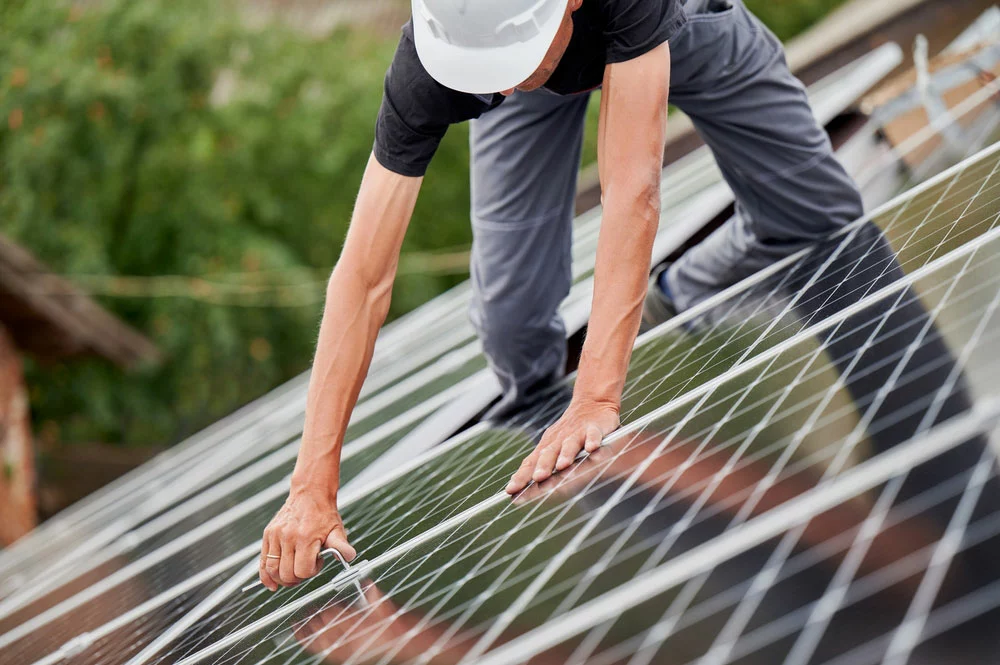
Installer working on steep roof
Your roof’s pitch is another crucial factor to consider. You can find it by dividing your roof’s vertical rise by the horizontal run.
Additionally, the recommended angle for solar panels is 30 degrees. In other words, you should have a 7/12 roof pitch. Therefore, your roof height should increase by 7-inches for every 12-inches of horizontal space.
Roofs with steeper pitches would have adverse impacts on your energy production. For instance, a 40-degree tilt would offer a one percent energy production reduction. Anything more than this angle would be too steep.
Another thing to consider with a steep roof is installer safety. Steeper roofs may be dangerous for installers.
However, you can rest assured if you have a flat roof. But you’ll need brackets to set the panels at the right angle, which may cost some extra bucks.
Note Your Roof’s Shape and Size
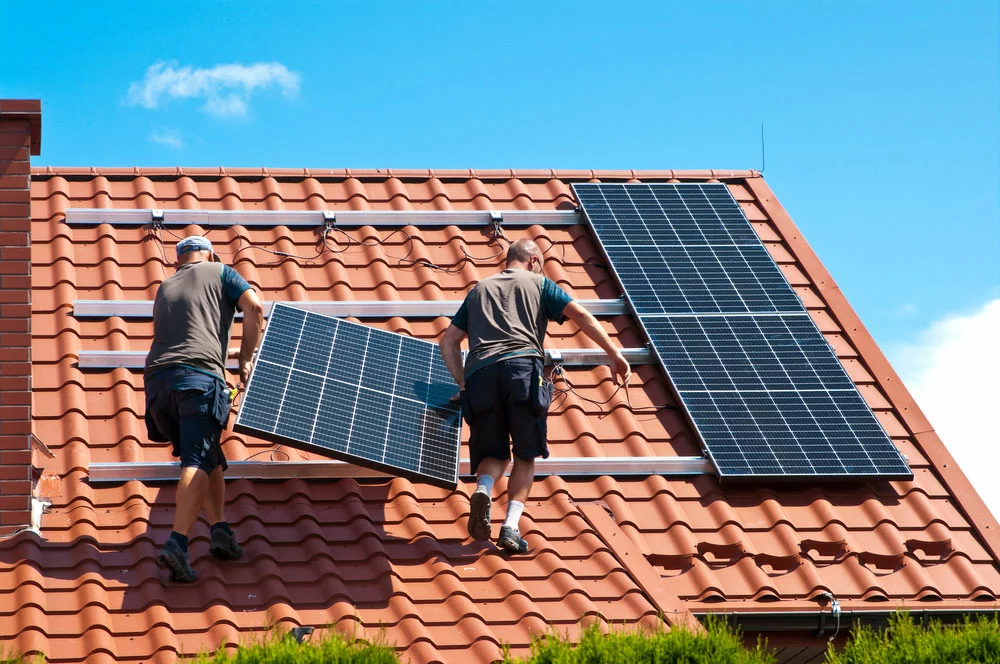
Two men installing solar panels on the roof
Solar panel installation also depends on your roof’s shape and size. On average, you’ll need about 5 kilowatts to run your homes. In truth, that means your available roof area should be 300 feet minimum.
Unfortunately, you can’t get a roof size and shape with straight measurements. For instance, anything on the roof’s surface (chimneys, dormers, etc.) reduces the total available space.
So, we recommend contacting contractors to examine your roof and provide the necessary feedback. They’ll indicate if your roofs can handle solar and how much surface you need.
Check for Shades Around Your Roof
Having shades around your roof can severely dampen your solar system’s potential. Unfortunately, most situations are beyond your power. For example, taller buildings will inevitably cast shadows if they surround your house.
However, you can remove or trim other shade sources like trees if they block your access to sunlight.
Not sure if shades around your area would cause energy production problems? We recommend consulting your contractor for expert opinion.
FAQs
What direction should my roof face for solar panels?
Your solar panels would be more effective on a roof facing true south in the northern hemisphere. Remember that the true south differs from the magnetic south popular with compasses. If unsure, you can look up your house direction on Google Maps.
How old should my roof be?
Ensure your roof is in top condition before installing solar panels. Going solar can last up to 40 years, so be sure your roof won’t need replacement anytime soon.
Should I worry about the shade on my roof?
Shades will reduce your solar system’s output and performance. So, examining how much roof shade you have before installation is critical.
Conclusion
Apart from the factors covered in this article, You need to watch out for some other things when going solar. For instance, your shingles may be fragile and break during installation (which makes your roof unfit for the panel’s weight).
Also, you must ensure your roofing material is waterproof and fire-resistant to avoid property damage. Solar panels poorly installed may burst into flames or cause other types of damage.
Therefore, it’s ideal to confirm if you have the best roof for solar panels. Alternatively, you can install your panels on the ground.
Do you have more questions? Be sure to contact us for the best support.
